Most Impactful AI Trends For 2024 Businesses Can’t Ignore

The speed at which AI progresses and fuses into business operations and our lives will only increase in 2024. Artificial intelligence is not a concept anymore; it’s a real power behind great products like ChatGPT and the success stories of Amazon and Nike. But AI trends aren’t just for the tech giants, though they are the ones who are setting them. They just showed that technology that was considered theoretical and a bit futuristic to most entrepreneurs is now an easily accessible, practical tool for businesses of all sizes.
Have you heard? McKinsey found that approximately 55% of companies adopting AI are seeing returns that would make even the most seasoned investors take notice. They report revenue increases by up to 10% in service operations, marketing and sales, strategy and corporate finance, and human resources. Irrespective of your experience with AI apps, the technology isn’t going anywhere and is poised to reach almost $2 trillion by 2030.
As someone who has been deeply involved in AI software development for quite some time, we decided to recap AI trends in 2023. But as a forward-thinking company, we also conducted research on the major artificial intelligence advancements for 2024 to help businesses prepare for the future and refine their strategies. Because with so many AI uses, it can be hard enough to find what really matters for your business.
A Glimpse into the Past: AI Trends from 2020-2023
Looking back at AI trends in 2023 and earlier helps trace the milestones that shaped the current trends in AI and future possibilities. So, let’s review what applications of artificial intelligence amazed businesses a few years ago.
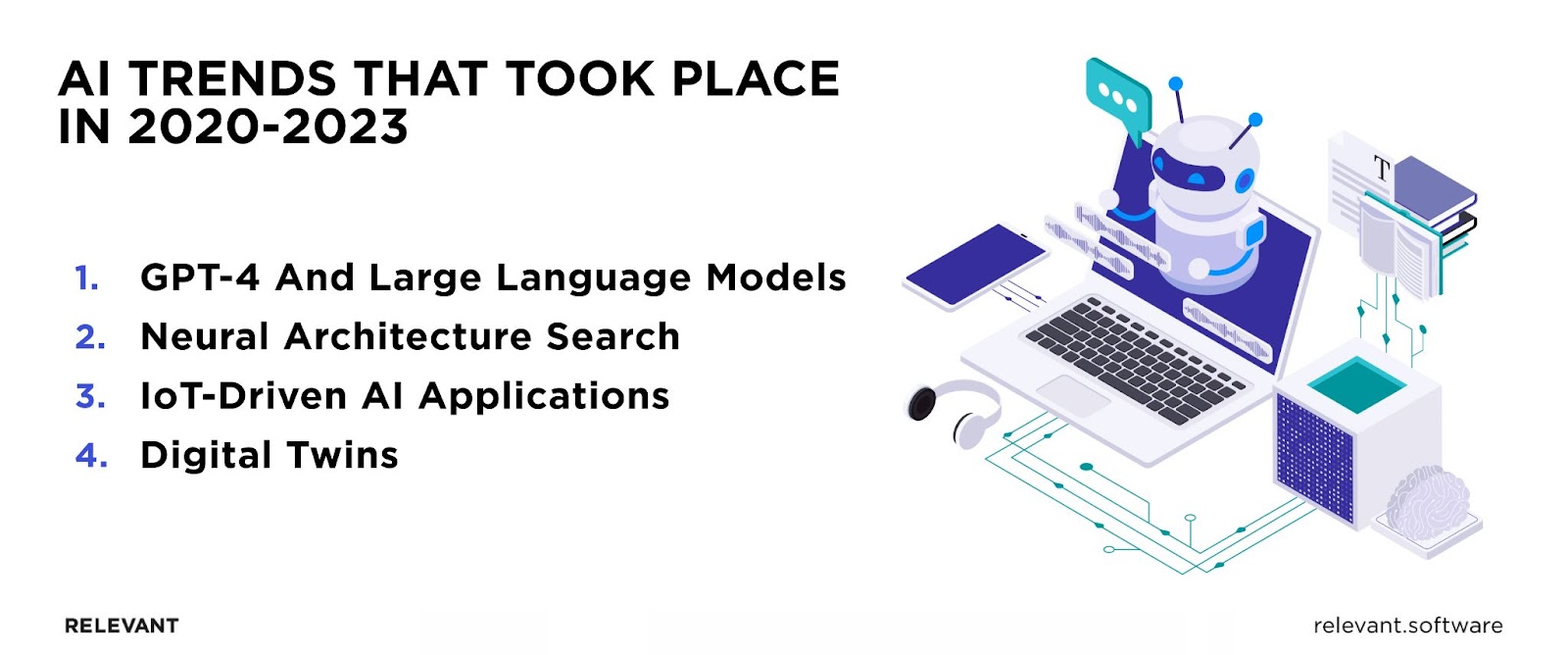
The Rise of GPT-4 and Language Models
We would have nothing like ChatGPT as we know it without large language models (LLM). LLM is a type of AI that uses deep and machine learning techniques and colossally large data sets to understand and create fresh, original text-based content. The capability and size of these models have exploded over the past few years. OpenAI, with its series of GPT-GPT4 (Generative Pre-trained Transformer), has made significant strides in this field. Their latest GPT-4 has around 1 trillion parameters, an unprecedented scale, making it an incredibly powerful text generation tool.
Released in late 2022, ChatGPT is a prime example of the advancing large language models. Here’s how it explains what a large language model is.
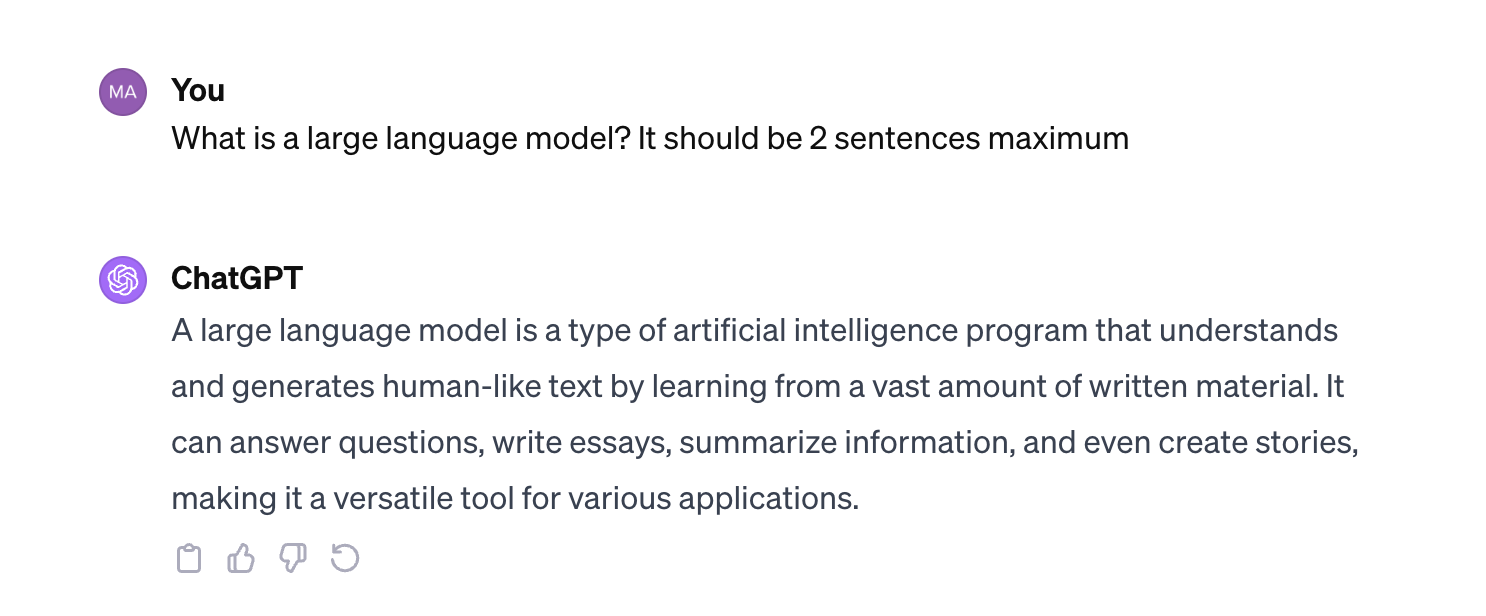
Of course, LLMs have opened new possibilities for businesses to create original content that engages customers. ChatGPT-4, as the most powerful model at the moment, can help generate ideas for blog posts or social media posts, produce drafts, write landing pages, and any type of content. LLMs also enhanced the conversational abilities of chatbots and virtual assistants, which can now produce natural, humanlike, engaging responses. With LLM’s continuous refinement, we have no reason to think these AI trends will go away next year.
To better understand modern LLMs, read an overview of the OpenAI ChatGPT.
Neural Architecture Search (NAS) and AutoML
AutoML and Neural architecture search (NAS) became a very hot topic in 2018 and among key AI trends due to Google’s developments in this field. Both techniques are aimed at making machine learning (classical ML and deep learning) available to the masses by simplifying the cumbersome ML model development.
So, NAS, a subfield of automated ML (AutoML), helps find the best neural networks and optimal structures for designing higher-performing models faster for given problems. In fact, NAS made it possible to use neural networks to build new neural net architectures that are far more complicated than human field experts may think to try. Since the manual design of neural networks is extremely time-consuming and error-prone, one can imagine how NAS can accelerate the process. As for AutoML, it automates the model selection, choice of the most effective training hyperparameters, and some other tasks involved in applying ML. In other words, these AI-based tools help businesses minimize errors and drastically shorten the time to production.
Here are several reasons why one should consider using NAS and AutoML:
- Streamline the process of choosing and evaluating neural net architectures
- Gain better accuracy and faster inference outcomes
- Reduce the lengthy process of deploying deep learning models into production
IoT-Driven AI Applications
Along with standalone AI trends, the business world saw a powerful combination of AI and IoT. The symbiotic of these technologies merges IoT’s connected infrastructure with AI’s intelligence. So, rather than simply gathering and transferring data, it can also be analyzed to assist in decision-making with little or no human intervention. As this blend brings invaluable insights and devices learning from their data, it found applications in such areas:
- Smart homes. AI-powered IoT systems analyze behavior patterns to adjust lighting, heating, and other environmental controls to improve the comfort of residents while optimizing resource usage and lowering operational costs. Integrating AI with smart building sensors also significantly boosts safety measures, mitigating risks like fires and floods.
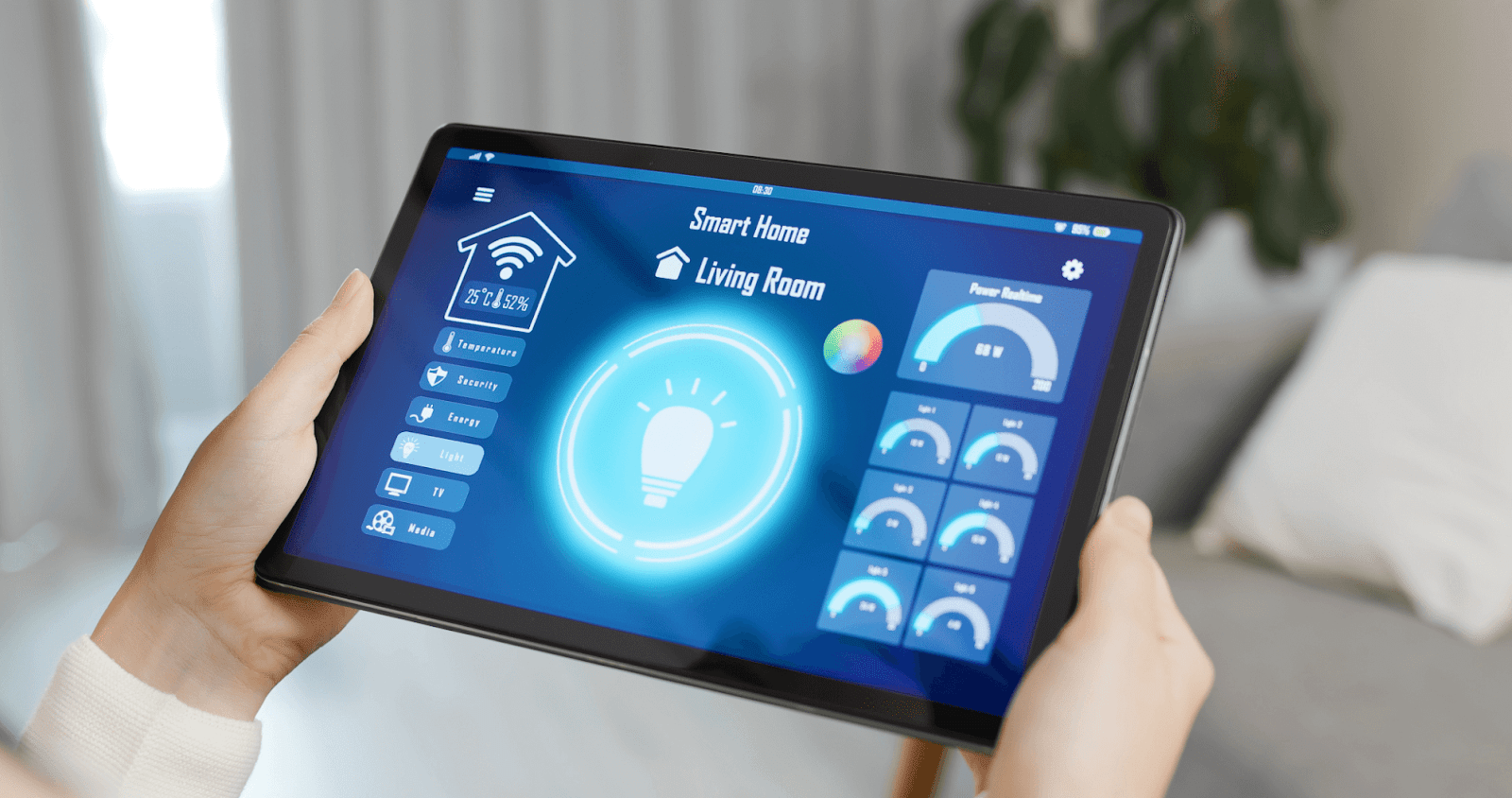
- Industrial automation. Manufacturers use IoT and AI to track equipment performance, where sensors detect potential machine failures and schedule timely maintenance. This way, manufacturers can minimize expensive downtime and lower operational costs.
- Healthcare monitoring. While wearables can monitor patients’ vital signs 24/7 and in real-time, IoT-driven AI apps can detect early illnesses, take preventative measures, and manage patients’ drug treatments.
Digital Twins
Digital twin technology, a digital representation of a process or an object that exists physically, gained traction a few years ago as one of the enterprise AI trends. They’re commonly used to optimize processes and improve efficiency as they allow engineers to find problems in existing processes or equipment, test improvements, and experiment using simulations. Some of the major digital twin benefits are its ability to use real-time data about the physical object performance obtained from sensors and run multiple scenarios using the what-if model. For instance, the implementation of digital twins at Nokia’s facility in Finland resulted in a 30% boost in productivity and halved the time-to-market for their products.

But where does AI fit this picture? Paired with digital twin technology, artificial intelligence can enhance the predictive capabilities and accuracy of models that would be impossible to configure manually. It can decide which tests it’s best to run based on the received information and then determine which actions to take to obtain the desired results. Apart from manufacturing, great advantages technology can bring to urban planning, drug design, environment improvement, and other spheres.
We have reviewed the major AI trends that made a splash in recent years and continue to progress and find new use cases across different sectors. Now, it’s time to think about AI future trends to understand how they can shape the business landscape in the coming years.
Groundbreaking AI Trends for 2024
In this section, we’ll discuss what we and leading AI players believe are the key AI trends in 2024.
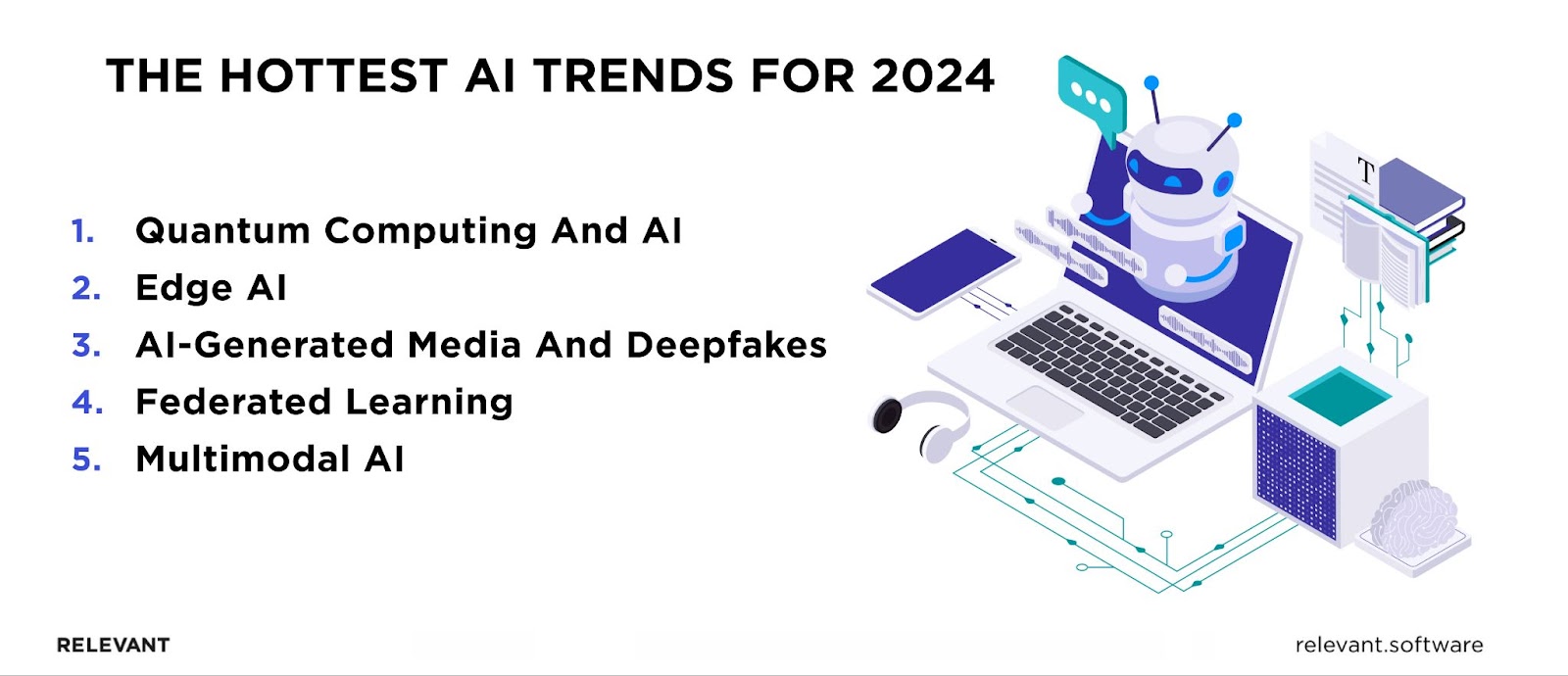
Quantum Computing and AI
Quantum computing has long been an alluring field, promising a seismic shift in computing power, but it has often been dismissed as overhyped. And while business leaders were captivated by AI hiring trends and workplace AI in 2023, IBM debuted a utility-scale quantum processor that finally brought increased computational power to corporate R&D. Another announcement signaling noticeable progress was made by Atom Computing, which plans to release a 1,125-qubit quantum computer in 2024. This development nearly triples the capacity of the currently most powerful IBM’s Osprey.

In 2024, we anticipate quantum computing to meet with artificial intelligence to enhance the capabilities of the former. Since training more complex ML and large language models requires extensive computing resources, it won’t take long for AI players to turn to quantum powers to push the boundaries of ‘large’ neural networks and deep learning models.
Most importantly, quantum-powered AI trends hold the promise of solving complex problems that are beyond the classic computer capabilities and ML techniques. This disruptive duo can boost medical research, drug discovery, investment strategies, and cybersecurity.
Decentralized and Edge AI
Enterprises looking to get the most out of their AI initiatives should take a closer look at the emerging AI trends, namely edge AI. It’s a blend of edge computing and artificial intelligence, which is gaining popularity for several reasons.
Edge computing is all about the decentralization of processing power – bringing computational tasks to the edge of the network, closer to the data sources. Such a shift from centralized cloud computing to the network edges can reduce latency, cut down on data transfers, and improve privacy.
When coupling this technology with artificial intelligence, companies can achieve faster decision-making while enhancing data security. That’s because edge AI embeds its data processing capabilities directly into devices like smartphones, IoT devices, and sensors. It lets applications and devices that collect data locally make decisions without having to wait for this information to be sent and processed in the centralized cloud and then returned to take action.
Edge AI is the key to extracting the value of data produced by companies’ products and operations on the spot and improving the performance of AI applications working locally. That’s why, in 2024, we expect more business leaders to deploy AI at the edge to power autonomous systems and other new AI trends in image and speech recognition, AI handwriting recognition, and NLP models.
AI-Generated Media and Deepfakes 2.0
The incredible rise of generative AI capable of producing original audio, video, and photo content has sparked both excitement and concern. Solutions powered by this AI model can help business owners enhance customer experience with lifelike virtual assistants. They can also use these widely accessible AI tools to create captivating marketing materials and training videos with ease and a fraction of the cost.
However, the same tools have made it easier for virtually anyone to create highly realistic deepfakes (AI-generated synthetic media that modifies existing digital content to produce fabricated ones). Although Deepfakes 1.0 started as a harmless activity largely used for entertainment purposes, the next generation, powered by current AI trends, can create fake content with frightening accuracy. The realism of Deepfakes 2.0, where videos or audio are manipulated to appear incredibly authentic, poses a genuine concern for misinformation, reputation damage, financial fraud, and security breaches.

Source: Internet. Created by Chris Ume
Fortunately, software to detect deepfakes is also getting better. Detectors use machine learning to identify anomalies and patterns typical of deepfake content. Apart from using the latest detection tools, businesses can educate employees to spot signs of deepfake attacks and implement more sophisticated authentication methods.
Federated Learning: AI with Privacy in Focus
One of the emerging AI trends that will gain prominence in 2024 is federated learning. It’s a new word in responsible AI development that business leaders demand.
Federated learning (FL) is a machine learning (ML) framework that allows multiple local devices (such as local servers, IoT sensors, or smartphones) to collaboratively train an ML model without sharing their data. Instead of sending data to a central server as the traditional training approach requires, devices share the model while data never leaves its original location. So, companies can improve the intelligence of their AI systems without worrying about data privacy and security.
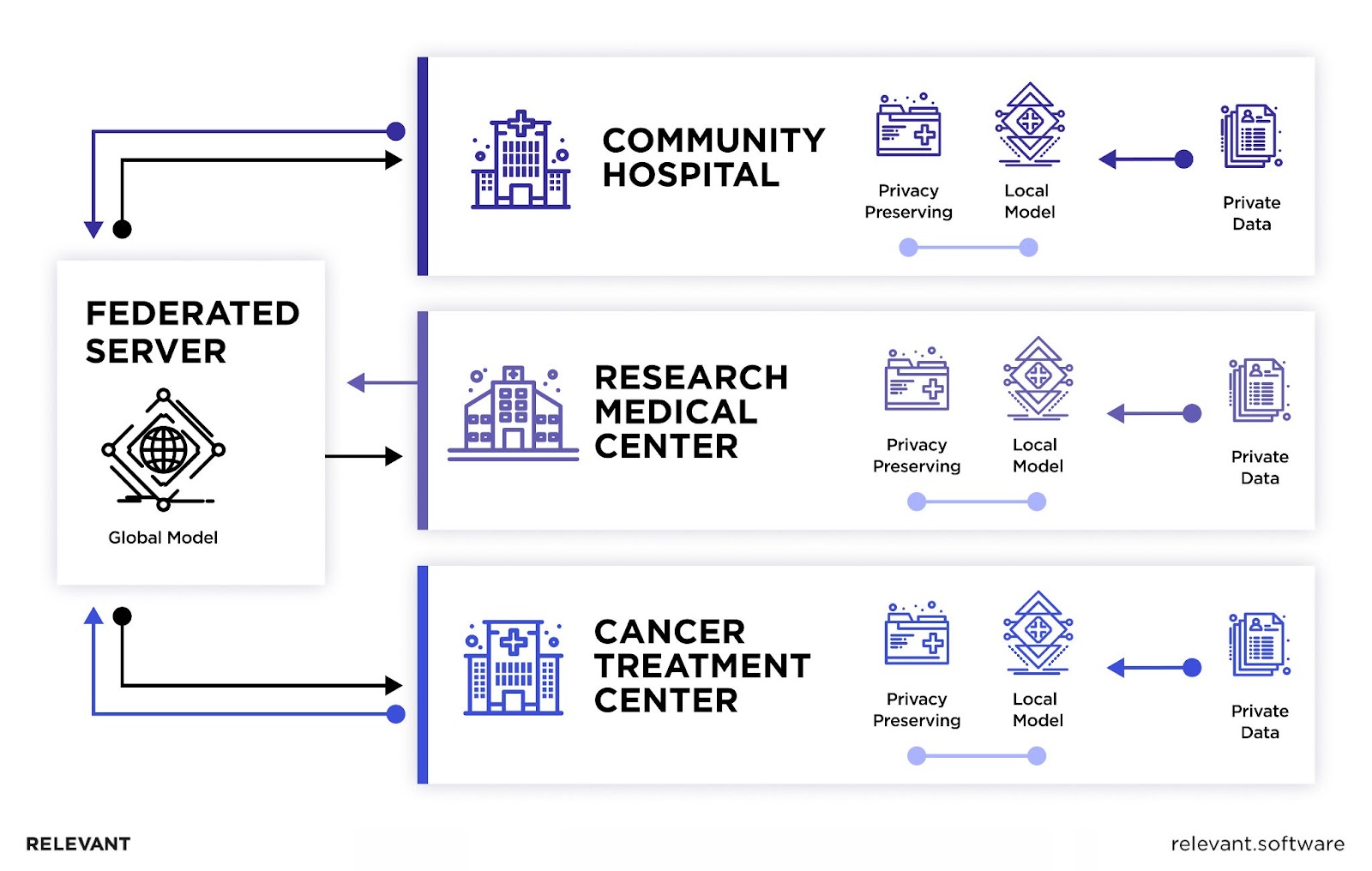
Source: NVIDIA
This decentralized approach to ML model training solves many problems:
- Privacy of user data by preventing information sharing among competing enterprises
- Security of ML models as data distributed across multiple devices is more difficult to compromise for attackers
- Scalability of the FL approach makes it ideal for applications that deal with massive amounts of data, such as mobile applications or IoT devices
- Collaboration to solve complex problems
- Decreased system’s storage and computing needs
The key areas where FL has already been tested on a large scale are industrial AI, smart chatbots, and recommendation systems. But considering the security improvements of these new trends, AI development brings companies in predictive healthcare and drug discovery domains, finance, and auto sectors to join the wave in 2024.
Multimodal AI Integration
Among other AI trends company leaders should keep track of in the coming years are multimodal AI systems. Although the term may sound like a complex concept, in fact, it’s an AI model that can perceive and process multiple types of data like images, video, speech, audio, and text.
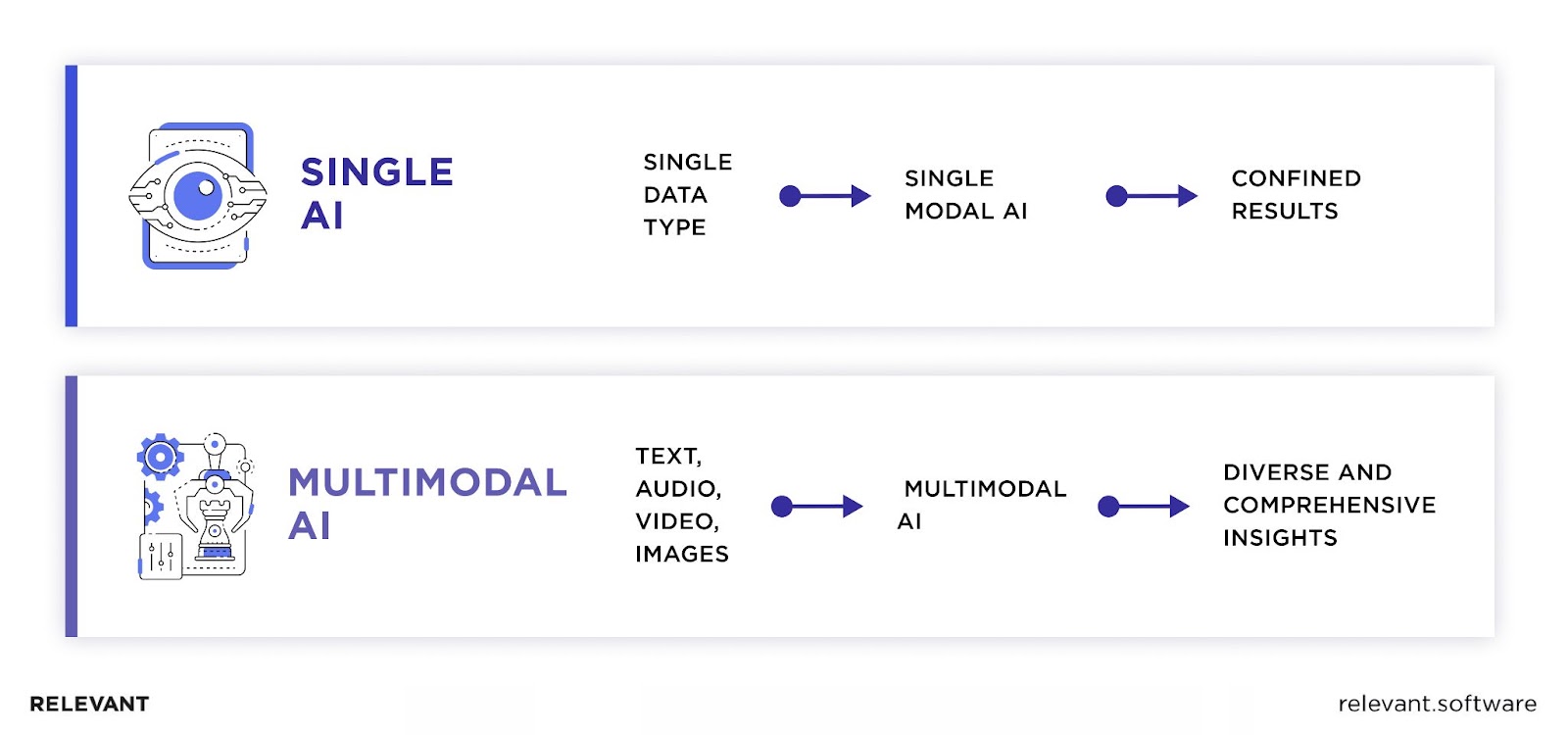
Unlike conventional AI systems that focus on processing single modality or single data type, multimodal features help ML and deep learning models better understand real-world environments just like people do. For example, when we read comics, we combine both illustrations and texts to grasp the full story. Similarly, multimodal learning models can make more nuanced interpretations when processing visual and written content together. Trained on massive datasets, they can learn the intricate relationships between data types:
- Text-to-image synthesis
- Image-to-text generation
- Video-to-text analysis
- Video-to-image generation
- Joint learning of modalities
Using multimodal features proved to be extremely beneficial in certain domains. In healthcare, AI applications that can analyze imaging data, medical history, and lab results as a unified source will better predict disease progression and make diagnoses. The automotive industry can use multimodality to process data from sensors, cameras, and audio inputs to improve the safety and functionality of autonomous vehicles. The growing number of applications across different sectors explains why multimodality will be among the top AI trends in 2024.
Considering the insane demand for AI technology implementation, you may find our detailed guides on How to create an AI system and the best languages to do it quite interesting.
Industries Revolutionized by AI Trends in 2024
AI trends will touch virtually every business and industry in 2024. However, some sectors will experience a larger impact of this deeply transforming technology. Leading players in these fields are already extensively using AI solutions, seeking new ways to improve their bottom line. So, what are those industries, and how will they benefit from the emerging trends in AI?
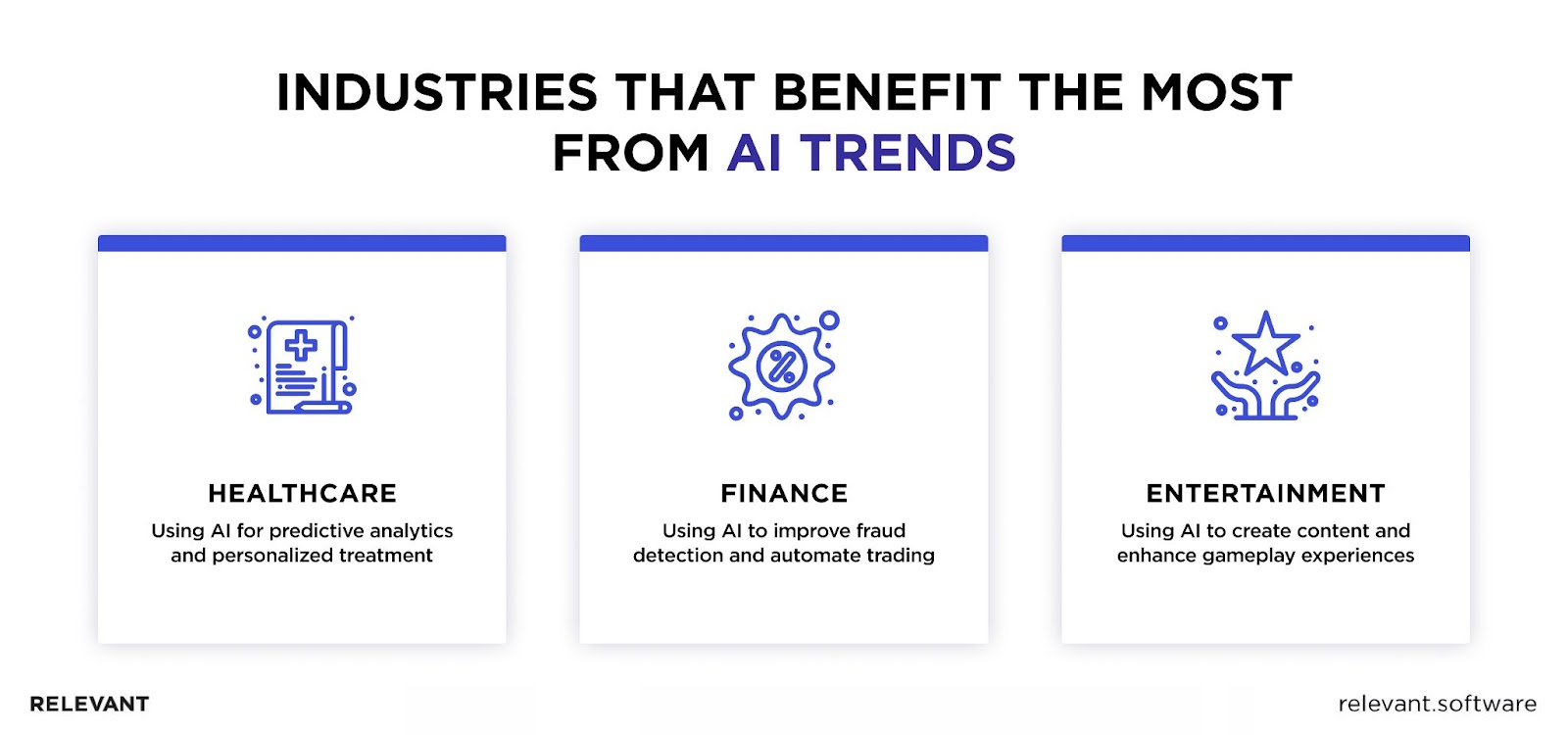
Healthcare: Predictive Analysis and Personalized Treatments
Diagnosing patients better than doctors using traditional tools is a core capability of artificial intelligence. Using deep learning algorithms, healthcare software was able to improve the precision of medical imaging interpretations in X-rays, MRIs, and CT scans, which gives diagnostics a new push. Moreover, hospitals that use AI in healthcare trends can produce amazingly correct prognoses for patients with rare cases of leukemia or cancer, and not only.
On the patient care front, medicine organizations will be able to develop individualized treatment plans thanks to AI that can analyze patients’ genetics and molecular profiles. Meanwhile, patients can enjoy better and more personalized experiences with AI assistants guiding them through the healthcare journey. Drug discovery is another medical domain that will be hugely influenced by AI trends. Companies build digital twins of people that leverage AI to complete clinical trials faster and determine which molecules are most likely to make successful drugs.
Finance: Enhanced Fraud Detection and Automated Trading
AI trends will also shape the way financial firms cope with fraudulent transactions. ML-powered software can identify abnormal activities and unusual patterns in transactions and let financial professionals act quickly to protect their customers. We believe it will soon become a new standard in finance and banking. Apart from increasing client confidence, AI in finance will also enhance cybersecurity and protect data from rapidly evolving cyber threats. In 2024, we can also expect artificial intelligence models that can adapt to changing fraud behaviors and trends in real time.
Automated trading will also get an upgrade. In the next few years, AI in finance will develop new types of trading algorithms that will be able to:
- Trade across multiple markets at once
- Alter strategies to changing market conditions
- Consider social media sentiment and other non-traditional data sources.

Entertainment: AI-driven Content Creation and Gaming
AI in entertainment is redefining the very nature of interactive gaming. More and more organizations in this industry turn to artificial intelligence for procedural content generation (PCG), one of the main AI trends. PCG algorithms help gaming companies produce large game worlds with realistic landscapes, interactive game elements, and characters that resonate with players on an emotional level much faster, requiring less manual work.
Given the popularity of generative AI, it’s not surprising that AI in entertainment has extended its reach into storytelling. Instead of linear narratives, games now incorporate dynamic, personalized, and unique storylines that develop depending on player choices. Such in-game narratives add to interactivity that truly engages players.

The gameplay also got a boost thanks to AI trends. Players can now enjoy more emergent and personalized gameplay experiences, which will replace rigid and often predictable mechanics. AI-driven systems take into account player behavior and preferences to offer game libraries and in-game challenges that meet individual tastes. Thus, games become more engaging, and players are more satisfied.
Final Thoughts on AI Trends
As we wrap up our review of current and future trends in AI, it becomes apparent that Pandora’s box of AI was opened for good. The colossal progress made through 2020-2023 persuaded business leaders to eagerly look forward to the upcoming AI trends and developments to unfold in 2024. While still exploring AI’s possibilities, companies should have a clear strategy, focus on solving real-world problems, and, of course, the right expertise to unlock the full technology potential.
If you’re as excited as we are about the groundbreaking possibilities of machine learning and plan to adopt intelligent technology in one way or another, Relevant Software may be the tech partner you’re looking for. Our experienced AI engineers keep abreast of the latest tech trends to develop cutting-edge solutions that set you apart.



